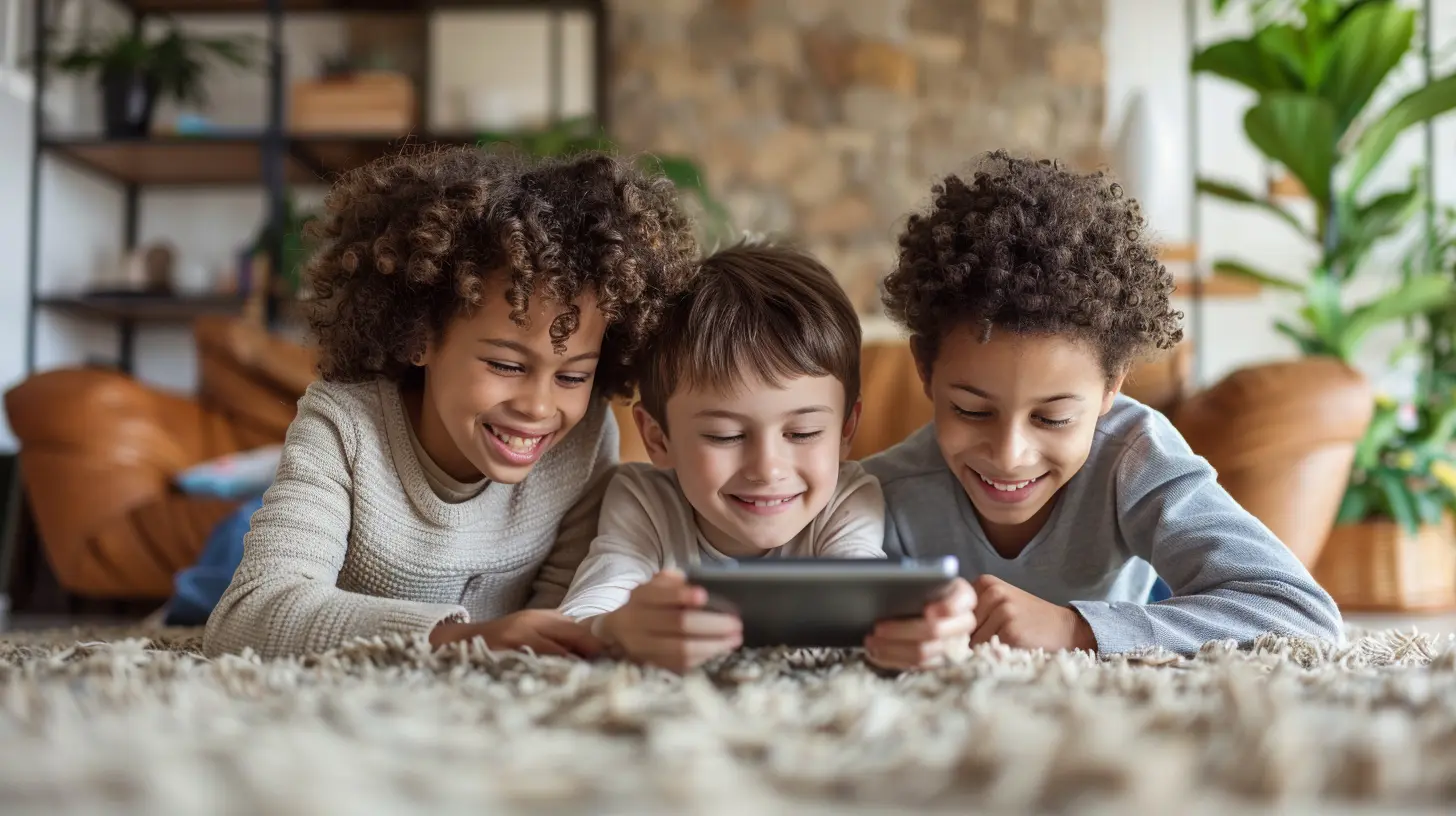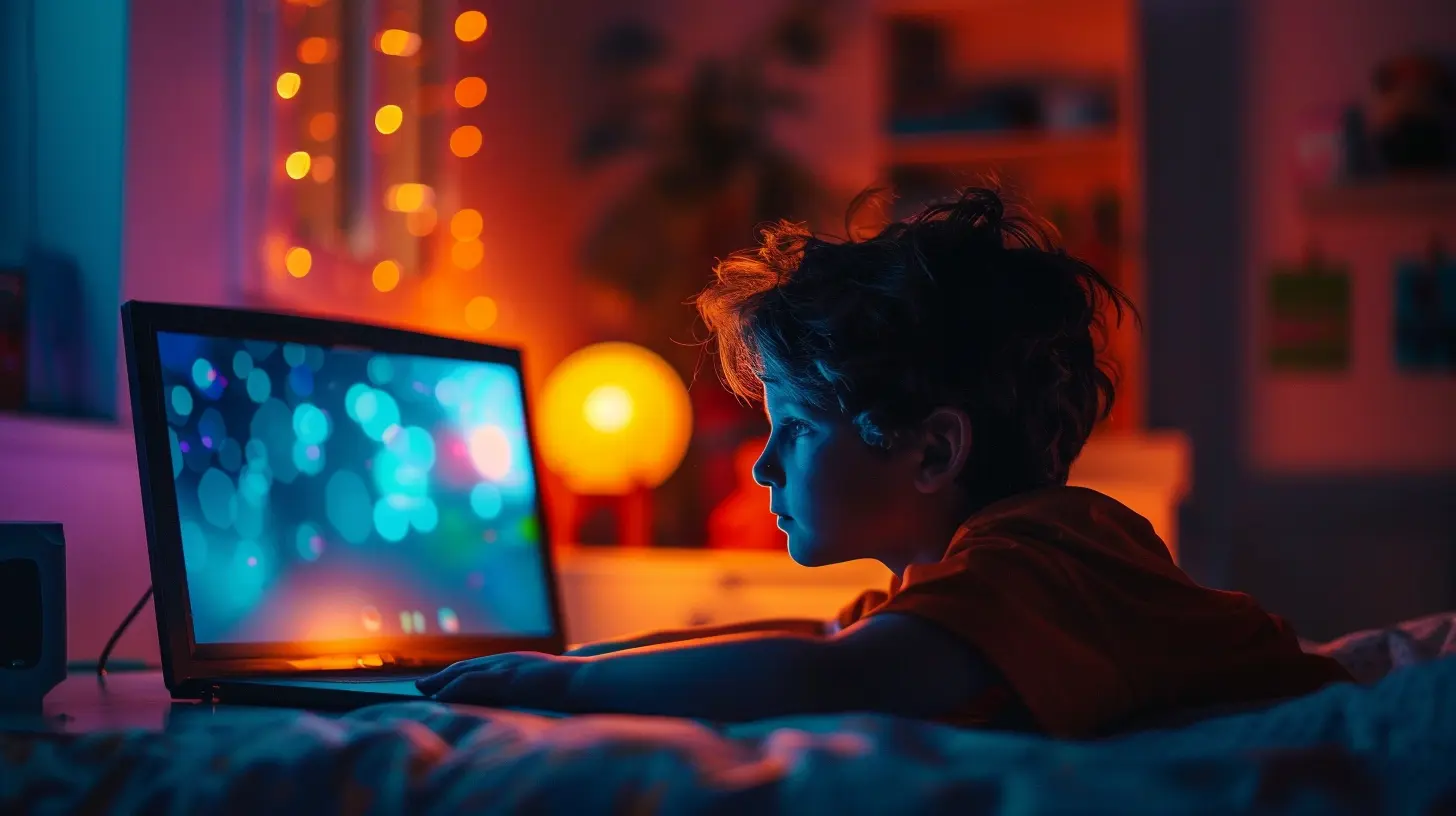Screen Time: Finding the Right Balance for Your Family
24 September 2025
Let’s admit it—screens are everywhere. They're in our pockets, on our wrists, in our cars, and heck, even in our fridges. And if you’re a parent like me, chances are you’ve found your toddler watching YouTube tutorials on how to become a ninja before they’ve learned to tie their shoes.
Welcome to the age of screen time—a digital double-edged sword that's got us all asking: “Is too much screen time frying my kid's brain… or just giving me five dang minutes to drink my coffee in peace?”
Well, you’re not alone. Every parent is fighting the same good fight: figuring out how to juggle tech without letting it take over. So, let’s dive into the wonderful, wacky world of screen time and how to strike a balance that won’t make you lose your mind.
Table of Contents
- Why Screen Time Isn't the Villain- How Much Is Too Much Screen Time?
- The Different Flavors of Screen Time
- Signs Your Kids Need a Digital Detox
- Screen Time by Age: What the Experts Say
- Finding the Right Balance: Practical Tips
- Making Screen Time Meaningful
- Leading by Example (Even When It’s Hard)
- Screen-Free Activities Your Kids Might Actually Enjoy
- When to Worry (And When to Chill)
- Final Thoughts: Don’t Beat Yourself Up

Why Screen Time Isn't the Villain
Let’s clear the air: screen time isn’t inherently evil. Yep, I said it.Technology gives our kids access to a world of learning, creativity, and yes—even some peace and quiet for us parents. Educational apps, creative games, documentaries about dinosaurs... these things can actually be good. The key is in the how and the how much.
Think of screen time like sugar: a little can be delightful, but a giant bag of Skittles for dinner? Not the best idea.
How Much Is Too Much Screen Time?
This is the question that haunts bedtime scrolls and PTA meetings. The American Academy of Pediatrics suggests no more than:- 1 hour a day of high-quality programming for kids aged 2 to 5
- Consistent limits for kids 6 and up
But let’s get real—some days are more “TV babysitter” than “Pinterest-perfect parenting.” And that’s okay. The goal here isn't perfection, it’s balance.
Here's a rule of thumb: if screens are replacing sleep, physical activity, or real-world interactions regularly—it’s probably time to rein it in a bit.
The Different Flavors of Screen Time
Not all screen time is cut from the same cloth. There's a big difference between a two-hour Minecraft marathon and a 30-minute educational video on space (complete with googly-eyed aliens). Let's break it down:- Passive Screen Time: Think binge-watching cartoons or scrolling TikTok. Easy entertainment, but limited brain engagement.
- Interactive Screen Time: Educational games or programming robots—hello, tiny tech geniuses!
- Social Screen Time: Video calls with grandma or texting friends. Not all screen time is antisocial!
- Creative Screen Time: Making music, editing videos, or designing digital art. Creativity + tech = magic.
Knowing the difference helps you make better calls about what's actually worth watching or playing.
Signs Your Kids Need a Digital Detox
Sometimes it’s obvious. Your sweet cherub turns into Gollum when you suggest turning off their tablet. Other times, it’s sneakier.Here are some telltale signs it’s time to scale back:
- Meltdowns when it's time to unplug
- Skipping meals, missing sleep, or avoiding outside play
- Losing interest in hobbies they once loved
- Zoning out in front of screens like tiny, tech-possessed zombies
- Grades starting to slip or attention spans disappearing like socks in the dryer
If you're nodding along, it might be time to hit reset.
Screen Time by Age: What the Experts Say
Appropriate screen time really depends on the age and developmental stage of your child. Here’s a quick cheat sheet:Babies (0–18 months)
Avoid screens—unless it’s a FaceTime with grandma (because, ya know, grandma rules). Focus on cuddles, peekaboo, and chewing on everything in sight.Toddlers (18 months–2 years)
Only choose high-quality content, and watch with them. Think of this as screen time with training wheels.Preschoolers (2–5 years)
Limit to about 1 hour a day. Stick with educational content. Co-view when possible so you can talk about that singing panda together.Kids 6 and up
Consistency is key. Make sure screen time doesn’t crowd out sleep, homework, or good ol’ fashioned boredom (which leads to creativity).Finding the Right Balance: Practical Tips
Here’s where the rubber meets the screen. Or something like that.1. Set Clear Boundaries
Create a screen time schedule. Kids thrive on routine—and knowing there’s a “no screens at the dinner table” rule reduces battles.2. Use Tech Tools
Parental controls and screen tracking apps are chef’s kiss. You don’t have to be Big Brother, just Smart Parent.3. Make Screen Time Earnable
Use it as a reward for finishing homework, chores, or reading. It adds a sprinkle of motivation.4. Designate Screen-Free Zones
Bedrooms and meals are great screen-free zones. Let real conversations and sleep happen there.5. Get Involved
Watch, play, or scroll together. You’ll know what they're consuming, and they’ll love the attention (even if they pretend not to).Making Screen Time Meaningful
If you're not going to eliminate screen time (and let’s be honest, you’re not), at least make it count.Choose content that builds skills or sparks curiosity. Encourage your kids to create instead of just consume. That means more coding apps and fewer unboxing videos of mystery slime.
And hey—ask questions after screen time. “What did you learn?” or “Who was your favorite character?” keeps them thinking and starts conversations.
Leading by Example (Even When It’s Hard)
Here’s the kicker: if we’re glued to our phones at every red light, airport line, and dinner table, our kids will notice.Modeling healthy screen habits might be the most effective teaching tool we’ve got. So yeah, maybe put your phone down too (after you finish reading this article, of course!).
Start with a family “tech bedtime” where everyone—including you—powers down an hour before bed. It’s weird at first, but it works wonders for sleep and sanity.
Screen-Free Activities Your Kids Might Actually Enjoy
You don’t have to start churning butter and raising goats (unless you’re into that). There are plenty of fun, screen-free activities that won’t cause mass eye-rolls:- Build a blanket fort (bonus points for secret snacks)
- Try a family board game night
- Cook something messy (hello cookie explosion)
- Go geocaching—it’s like a real-life treasure hunt
- DIY science experiments (exploding volcano, anyone?)
- Start a family book club with hot chocolate and silly voices
Sometimes boredom leads to brilliance. Just give it a chance.
When to Worry (And When to Chill)
We’re all terrified we’re going to mess this up. That our child will turn into a screen-zombie or grow up thinking social interaction only happens in Roblox.But here’s the truth: if you’re even reading this, you’re already doing better than you think.
When screen issues start affecting mental health, behavior, or your relationship with your child—that’s when it’s time to talk to a pediatrician or counselor.
Otherwise? Give yourself some grace. It’s a wild world out there.
Final Thoughts: Don’t Beat Yourself Up
Let’s keep it real—sometimes screens save the day. They keep kids entertained on long car rides, get us through grocery shopping, and give us a little breathing room.The goal isn’t no screen time. The goal is smart screen time.
So let’s aim for intentional use, active involvement, and tech habits we’d be proud to pass down. Because parenting in the digital age isn’t about eliminating screens—it’s about mastering the art of balance.
And besides, if you're balancing your kids' screen time while managing your own sanity, you're not just a parent—you're a digital-age rockstar.
all images in this post were generated using AI tools
Category:
Tech And KidsAuthor:

Steven McLain
Discussion
rate this article
1 comments
Raegan Jacobs
Finding balance? Please! Kids today think ‘screen time’ means they can ignore the real world. Time to power down and get back to reality!
October 5, 2025 at 4:26 PM

Steven McLain
Thank you for your perspective! Finding balance in screen time is indeed crucial for fostering meaningful connections and interactions in the real world.


